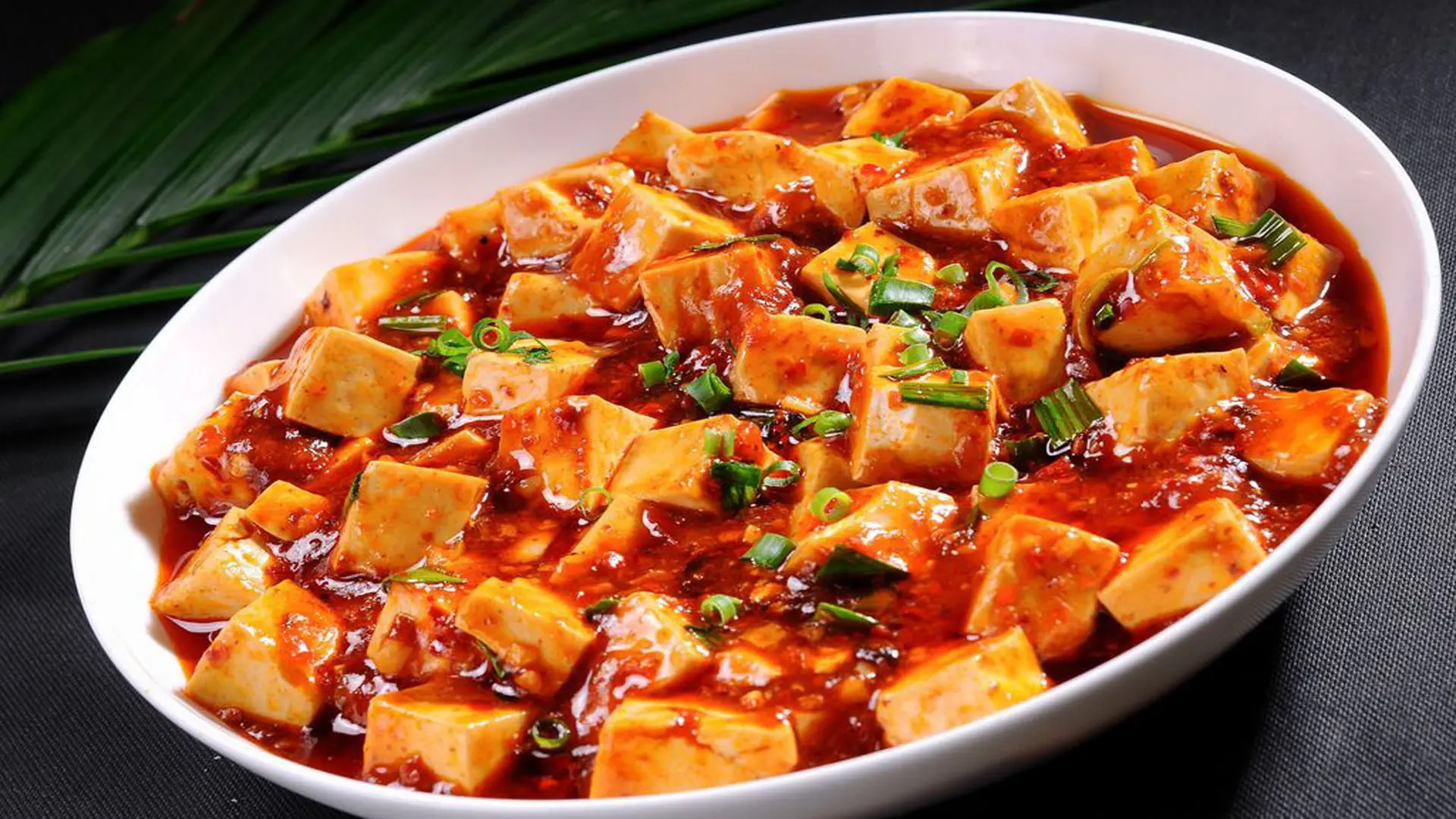A Culinary Journey into the Heart of Sichuan: Mapo Tofu
As a gastronomic practitioner, I am thrilled to delve into the world of Mapo Tofu, a dish that is not just a meal but a cultural emblem of Sichuan cuisine. Originating from Chengdu, the capital of Sichuan province, Mapo Tofu is a testament to the region’s love for bold flavors and the art of combining seemingly contrasting tastes into a harmonious symphony.
Origin and Cultural Background:
Mapo Tofu’s story began in 1862 when Chen’s Mapo Tofu restaurant was established. Named after its creator, Chen, the dish quickly gained popularity for its unique blend of flavors that perfectly encapsulate the essence of Sichuan cuisine. The name “Mapo” is derived from “ma” (numb) and “po” (pockmarked), referring to the numbing spiciness and the pockmarked appearance of the dish’s creator. This dish is a culinary journey through the rich tapestry of Sichuan’s food culture, where heat and flavor are not just ingredients but the heart of the cuisine.
Ingredients and Preparation:
The making of Mapo Tofu is a meticulous process that requires high-quality ingredients to achieve the perfect balance of texture and taste. The main components include:
1. Tofu: Soft and delicate, the tofu used is typically silken and absorbs the rich flavors of the sauce without losing its integrity.
2. Ground Beef/Pork: The meat is finely minced to create a robust, meaty base for the dish.
3. Chilies: Dried red chilies are essential for the heat, while Sichuan peppercorns provide the signature numbing sensation.
4. Bean Paste: Doubanjiang, a fermented broad bean paste, adds depth and complexity to the flavor profile.
5. Garlic, Ginger, and Scallions: These aromatics enhance the dish’s overall fragrance and taste.
The cooking process involves stir-frying the meat with the aromatics, followed by the addition of bean paste and chilies to create a rich, spicy sauce. The tofu is then gently added, ensuring it remains tender and silky throughout the cooking process.
Texture and Appearance:
Mapo Tofu is a study in contrasts. The tofu, with its velvety smoothness, contrasts beautifully with the rough, crumbly texture of the ground meat. The dish is often garnished with a sprinkling of Sichuan peppercorns and fresh green scallions, which not only add a pop of color but also a layer of freshness that cuts through the richness of the sauce. The final presentation is a harmonious blend of red, green, and white, with the sauce clinging to every piece of tofu and meat, creating a visually appealing and appetizing dish.
Representative Dishes and Culinary Features:
Mapo Tofu is a standalone masterpiece, but it also serves as an inspiration for many variations and accompanying dishes. It can be paired with steamed rice, which absorbs the sauce perfectly, or used as a topping for noodles, creating a hearty and satisfying meal. The dish’s defining characteristics are its bold spiciness, the numbing effect from the Sichuan peppercorns, and the interplay between the soft tofu and the robust, savory meat.
In conclusion, Mapo Tofu is more than just a dish; it is a culinary experience that takes you on a journey through the heart of Sichuan’s food culture. Its legacy, born in 1862, continues to thrive today, a testament to the enduring appeal of its flavors and the skill of its creators. As a food practitioner, I am humbled by the complexity and depth of this dish and encourage anyone with a palate for adventure to experience the magic of Mapo Tofu.
